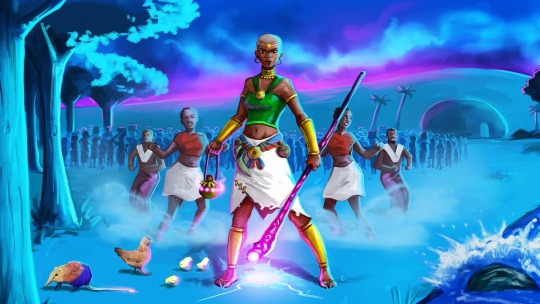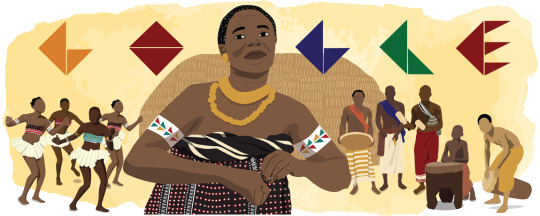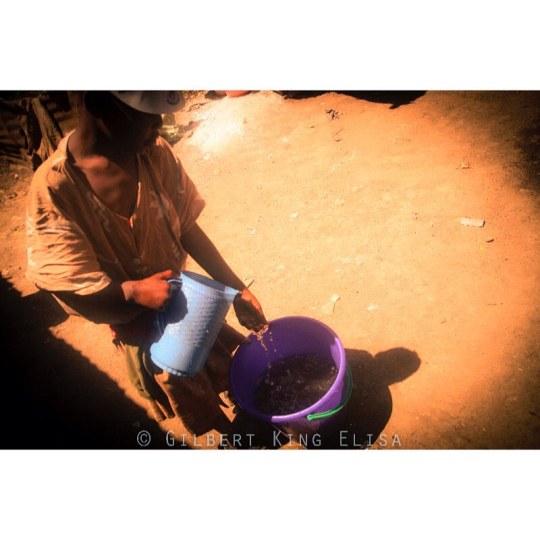#Kisii traditions
Explore tagged Tumblr posts
Text
Exploring the Rich Heritage of the Kisii Tribe in Kenya: A Comprehensive Look at the Gusii People
Exposing the Rich Traditions of the Kisii Tribe: A Cultural Treasure Found in Kenya The Kisii tribe, sometimes referred to as the Gusii or Abagusii, is a dynamic ethnic group that has assimilated into Kenya’s rich cultural tapestry with its own distinctive tapestry. This article explores the history, customs, and contributions of the Kisii people to Kenyan civilization, delving deeply into their…

View On WordPress
#Bantu ethnic groups#Gusii people#Kenyan cultural heritage#Kenyan tribes#Kisii#Kisii agriculture#Kisii culture#Kisii education#Kisii history#Kisii interpretation services#Kisii soapstone carvings#Kisii spirituality#Kisii traditions#LanguageXS
0 notes
Text
Soapstone dealer reinvents art with inspirational pieces – Kenya News Agency
A renowned dealer in soapstone artefacts in the Tabaka Ward, South Mogirango constituency, Kisii County, has invented new methods of carving objects with encouraging messages in a bid to widen his clientele and help people cope with the current harsh economic times. Daniel Apepo has shifted from carving the usual traditional functional items like soap dishes, sugar dishes, and the wildlife stuff…
0 notes
Text
Coffin With Photo Of Man Alive Found Dumped Outside His Compound

There was palpable tension in Nyamwansu Tabaka ward in South Mugirango, Kisii county, Kenya, after a coffin with a picture of an alive person was dumped in the community. It was gathered that the coffin was found outside the compound of Mzee Kayusi, a respected elder in the community, who is still very much alive. The incident has sparked fear and confusion among the residents, as it is believed to be a bad omen. According to their local customs and traditions, a coffin is only supposed to contain the remains of a deceased person and the presence of a picture of a living person is considered a taboo. The incident has attracted the attention of the media, with reporters arriving at the scene to cover the story. The community is in a state of disbelief, with many wondering who could have placed the picture in the coffin and for what purpose. The authorities have been called upon to investigate the matter and to ensure that such incidents do not happen again in the future. The community is also planning to hold a cleansing ceremony to ward off any bad luck that may have been brought about Read the full article
0 notes
Text
I don't think this is some outlandish hypothetical scenario, I think this is an actual well documented phenomenon, particularly in the African great lakes region:
Daniel Mungai Ndegwa at Kisii University in Kenya frequently saw mosquito nets used for fishing while doing research on Lake Victoria, which straddles Kenya, Uganda and Tanzania. “In every village I saw the nets being used for fishing or for drying fish,” he says.
The main reason people use the nets is because they are so cheap and plentiful, says Ndegwa. A traditional net can cost anywhere from 70,000 to 150,000 Kenyan shillings (£500 to £1200), but mosquito nets are provided free by many governments and charities.
Surely the contemptuous ones would the westerns deciding that they know better than the Africans, and that mosquito netting is a more pressing issue for them than the substance security that would be provided by a fishing net, no?
Every once in a while, I think about the bed net fishing controversy and it blows my mind a little bit.
For those who don't know, some charities distribute insecticide-treated nets for people in malaria-infested regions to sleep under. And some critics were (are?) very worried about the possibility that people would, instead, use the nets to go fishing and therefore damage the environment.
Seriously, there were apparently-serious thinkers declaring openly that poor Africans could not be trusted with nets. That we had to be very careful about giving them access to this dangerous technology. And these people, almost universally, considered themselves anti-racist!
The sheer level of contempt that some people have for the ultra-poor is just unbelievable. Even when you see it, you can't quite process what you're looking at.
13 notes
·
View notes
Text


Mnyazi wa Menza, also known as 'Mekatilili Wa Menza or Makatilili (1860s-1924) was a Kenyan independence activist who led the Giriama people against the colonial administration of Kenya between 1912 and 1915.
Mekatilili was born in the 1860s at Mutsara wa Tsatsu in Bamba, Kilifi county. She was an only daughter in a family of five children. One of her brothers, Mwarandu, was kidnapped by Arab slave traders and was never seen again. At some point in her life, Menza became married to Dyeka at Lango Baya.
Menza's motivation for resistance was led by economic and social-cultural concerns. Menza wanted to prevent any Giriama laborers from being employed by the colonial authorities, in order to ensure that they would remain in Giriama territory and only contribute to the well-being of Giriama people. She also was concerned about the increasing Western influence in Kenya, which she saw as eroding the Giriaman culture.
The colonial administrator for the region, Arthur Champion, held a public meeting on 13 August 1913, where he gave his demands to the community. Menza played a major role in the meeting as she expressed her opposition to Champion's demands, with Menza giving at the conclusion of the meeting a verbal oath that prevented her from working with or for the colonial administrators.
Mekatilili was agitated by what she saw as the erosion of traditional Giriama culture. The Giriama are a patrilineal community and women rarely hold leadership positions. However, Mekatilili was a widow. In Giriama society, women enjoy certain privileges, including that of speaking before the elders. She rounded up support for her cause against the colonial authorities due to the position she had attained as a strong believer of the traditional religion. In this, she was aided by the traditional medicineman Wanje wa Mwadori Kola. She gained a large audience through her performance of the kifudu dance. The dance was reserved for funeral ceremonies but Mekatilili performed it constantly from town to town, attracting a large following that followed her wherever she went
Mekatilili and Mwadori organized a large meeting at Kaya Fungo where they administered the mukushekushe oath among the women and Fisi among the men who vowed never to cooperate with the colonial authorities in any way or form. The colonial authorities responded by seizing large tracts of Giriama land, burning their homes and razing Kaya Fungo. This led to the unsuccessful Giriama Uprising, known locally as kondo ya chembe.
Mekatilili was arrested by the colonial authorities on 17 October 1913, and exiled to Kisii in Nyanza Province. According to colonial records, five years later, she returned to her native area where she continued to oppose the imposition of colonial policies and ordinances. Menza stated that Arthur Champion was solely responsible for forcing colonial policies on Giriama, which she claimed was eroding the traditional culture of Kenya. However, some narratives say that Mekatilili escaped from the prison in Kisii and walked over 1,000 kilometers back home to Giriama. She was later arrested and sent to a prison in Kismayu, Somalia where she also mysteriously escaped and returned to her home.
She died in 1924, and was buried in Bungale, in Magarini Constituency, Malindi District.

#mekatilili#nyanza#giriama#kismayu#kenya#menza#african#afrakan#kemetic dreams#brownskin#afrakans#africans#brown skin#african culture#afrakan spirituality#african woman#east africa#mnyazi#mnyazi wamenza#mekatilili wa menza#mekatilili wamenza#kenyan
27 notes
·
View notes
Text
Exploring the Culture of the Kisii People: A Journey into the Kissi Tribe of Africa
Unveiling the Fascinating World of the Kissi Tribe The Kissi people are an ethnic group with a rich cultural heritage, primarily found in the West African nations of Liberia, Sierra Leone, and Guinea. This article takes you on an immersive journey into their vibrant way of life, exploring their history, traditions, and unique customs. Whether you’re a cultural enthusiast, a student of…

View On WordPress
0 notes
Photo

Written by: Leah Bryant
The Different Tribes of Kenya
What are the key differences between contrasting tribes?
Kenya is an incredibly diverse country that is filled with endless cultural differences and an essence of long lived customs and traditions. There are over 40 individual ethnic groups in this East African country, all equally as connected and affiliated with the love and adoration of communal bonds. Kenya is home to a variety of tribes, all filled with contrasting heritage and folklore practices. In this blog post, we are going to delve into some of the more popular and controversially interesting tribes in Kenya, in hopes to grasp a sense of what the Kenyan people can share with us.
The first tribe we’re going to talk about is the ��Kikuyu” tribe. The Kikuyu tribe is one of the most popular tribes in Kenya and has developed its own set of cultures and traditions.
The tribe members are usually acknowledged for their large scale farmers and their “cash crops” which include the selling and distribution of both tea and coffee. They also have their own language which has kept its high importance in multiple areas where urban language (such as English and Swahili) hold great value! The Kikuyu man is given permission to marry more than just one woman at a time, providing that he is able to prove that he can support the wife accordingly. It is also common for a man to pay for his bride, as a sign of respect in their culture. The tribe is often associated with being both aggressive in behaviour, but subsequently looking after their own and showing respect to one another.

The next tribe we’re going to talk about it the “Mijikenda” tribe, which is located in the coastal region of Kenya. This tribe is so big that it comprises of over nine sub-tribes, whose cultures all revolve around the areas of “clans” and “age-sets”. Altogether there are around 1,900,000+ tribe members! It is considered as one of the most important Kenyan tribes as it gave birth to the Swahili culture. Often referred to as “clans”; Mijikenda members tend to live in groups of several family members and often have their own scared space to conduct rituals and prayers which is known as a “Kaya”. They are additionally known for their incredibly impressive cooking skills, with their staple dish being “Wali”; a meal prepared with rice and coconut milk.
Our third tribe is called the “Luhya” tribe. This is the second largest tribe in Kenya, holding an incredible 14% of the Kenyan population. They are based in the Western part of Kenya and withhold an impressive eighteen sub-tribes within the Luhya name, all in which practice their own dialect of the Luhyu langauge. A large part of their culture lies within the circumcision of young men. It is seen as an important ritual in majority of the sub-tribes, as it marks the transition from boyhood to manhood. The tribe is also known for its popular sport of bull fighting, alongside also being renowned for their love of food.
Our fourth tribe is called the “Kalejin” Tribe, which is the third most popular group in Kenya, forming an imposing 12% of the Kenyan Population, whilst additionally holding eight sub-tribes. Kalejin people live together in thatched huts which are often created out of mud, cow dung and wood. They enjoy practicing large-scale farming as a means of living and enjoy engaging in cattle keeping. They are also known for their love of fermented milk.
Our fifth tribe is called the “Kisii” tribe, which forms 6% of the Kenyan population and is based in the highlands of Nyanza in Western Kenya. Kisii families are usually large in quantity and choose to live closely together, with their daily activities include cooking and farming. Male circumcision is also an important factor in this tribes beliefs, but with the addition of female circumcision also being introduced. Although originally mandatory to be carried out by this tribe to circumcise a young woman (often before the age of five), the ritual has since been outlawed though continues to be practiced in some parts. Kisii members have been described as rather short-tempered, but also adhere to worshiping a god named “Engoro” who is a supreme deity of an ancestral spirit. The Kissi culture is also known for its development of basketry, soap stone carvings and pottery making.
Our sixth tribe is called the “Maasai” tribe, who are known for their renowned affinity with their cultural history in which they effortlessly mix with their more modern way of life. Only inhabiting around 840,000+ people and famous for their distinctive dress sense, The Maasai tribe are incredibly fascinating. Maasai families usually live in groups of ten to twenty members within their enclosure that they call “Enkang” which is protected by wires, fences and bushes. They live their lives dedicated to cattle farming which steadies their primary source of nutrition. They believe in a supreme god called “Enkai” and are known for their endurance and courage to become fearless warriors.

The last tribe we will be looking at is the “Luo” tribe, forming a grand 13% of the Kenyan population and residing within the Western parts of Kenya. Luo people depend on fishing as their main means of living and usually show reprimand if a Luo member does not dedicate their livelihood to this. Something authentic about this tribe is that they are known for their act of mourning. Luo tribe members are rotationally hired as “professional mourners” by locals, in which they will collectively mourn the life of someone who has passed. An important Luo tradition is to not only practice male circumcision on young boys, but to also introduce the extraction of six lower teeth. This practice is said by the Luo’s to distinguish the men from the boys. Luo people are additionally acknowledged for their reputation of bragging.
When learning about these tribes and all of the differing traditions and cultural preferences, it is incredible to acknowledge the depth into which each tribe possesses. Whether it be a means of community, the importance of survival, the principal of dialect or the significance of food, each of the tribes have one thing in common, and that is the connection they hold between themselves and their chosen tribe members.
#kenya#tribes#kenyan tribes#maasai#kikuyu#africa#african art#african culture#travel#travelling#travel blog#leah#charity#charities#donate#fundraise#fundraiser#uk charity#small business
14 notes
·
View notes
Text
Dr. Tonga Muchindu - Renowned Witch Doctor in Kisii

Dr. Tonga Muchindu - Renowned Witch Doctor in KisiiMganga Kutoka Kisii, Dr. T. Muchindu The Best Witch Doctor In Kisii., Mganga Wa kwaminika Kisii , Dr. Tonga Muchindu, renowned as the most skilled witch doctor in Kisii, is a true embodiment of the rich cultural heritage and ancient healing practices that have been passed down through generations in the region of Kisii., Dr. Muchindu has dedicated his life to mastering the art of traditional medicine and spiritual healing. CONTACT MGANGA KUTOKA KISII DR. TONGA MUCHINDU THE BEST WITCH DOCTOR IN KISII Call Dr Now WhatsApp NOW Contact Dr. Tonga Muchindu Call 📱 +254700807659 Whatsapp +254700807659 Mganga Kutoka Kisii, Dr. T. Muchindu The Best Witch Doctor In Kisii. Read the full article
0 notes
Text
I sometimes wish duo lingo had traditional African languages because I want to learn my mother tongue but my mom's the stereo typical nairobi kid who doesn't know the mother tongue and so is my dad so I feel like I'm both of my tribes only by name I am a kamba kisii who only knows things about my tribes through stereo types and whatever I can find in my grandma's books
0 notes
Photo

Harambee #Photography #InternationalSchools #JomoKenyatta #InternationalPhotography #Kenya #KenyanPeople #Education #Cultures #KentanCoffee #Traditions #PeopleofKenya #TravelPhotography #Students #KenyanTea #WinnersAcademy #HalfAWorldAway #School #Nairobi #EastAfrica #Africa #PeoplePhotography #Swahili #LanguageLearning #Kikuyu #Kisii #Luhya #GilbertKingElisa (at Jomo Kenyatta International Airport) https://www.instagram.com/p/CYIwtGVuGi6/?utm_medium=tumblr
#photography#internationalschools#jomokenyatta#internationalphotography#kenya#kenyanpeople#education#cultures#kentancoffee#traditions#peopleofkenya#travelphotography#students#kenyantea#winnersacademy#halfaworldaway#school#nairobi#eastafrica#africa#peoplephotography#swahili#languagelearning#kikuyu#kisii#luhya#gilbertkingelisa
0 notes
Text
Ch.6 Fieldwork

For this assignment, I mainly decided to focus on my immediate family, which is my parents, and when they came to this country. My parents are originally from Kenya which is located in East Africa and they have lived in this country for about 26 years. When they came from Kenya, they decided to live in New Jersey and have been living in the state ever since. Both my grandmothers are still living in Kenya as well as my parents' siblings. With that being said I was born in Jersey City, NJ and have been living in the city all my life. When it comes to American Nationalism, it was kind of a tricky question to answer due to everything we as black people face on a day to day basis in this country. I wouldn’t say we embraced it fully, but we understand what it is. Growing up my parents and relatives that live in this country have always embraced our culture around my siblings, cousins and I. From speaking the language, Kisii/Kiswahili, to the food and even to the clothing. As the years went by, some things we did when I was younger started to fade a bit, but for the most part they try to keep us connected to our roots and our culture. Personally I can’t speak our native language, but I can understand it here and there. As for the food, we still do eat certain foods such as mandazi, fried bread, chapati, similar to roti, and ugali, which is similar to fufu. Overall, I identify as an African-American, but more specifically I am Kenyan. I do feel as if there is a little of a disconnect from my culture, but for the most part I believe my parents/relatives do their best to help us stay connected. In the future, I plan on passing down all the traditions/culture to my kids so that we can keep our culture alive while living in this country.
0 notes